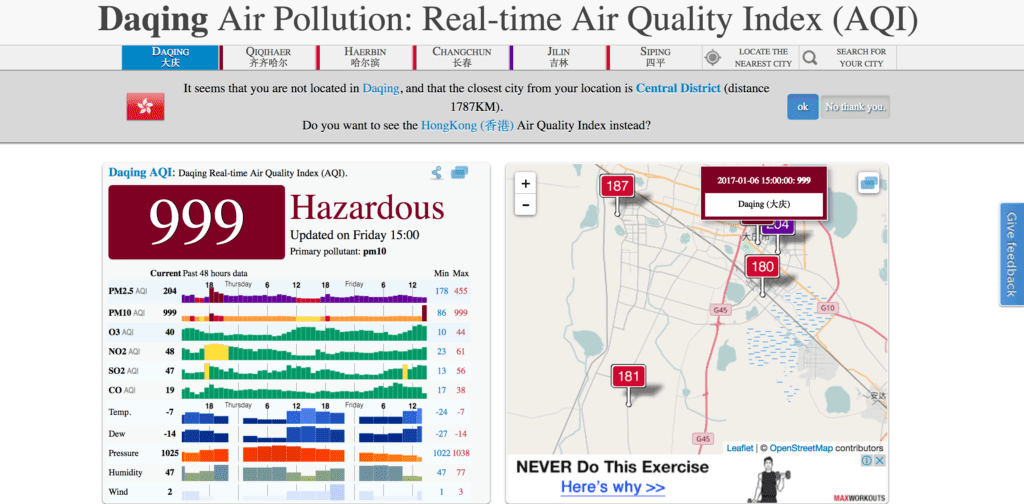An unusual thick and prolonged smog event is plaguing China’s northern part of the country. Being winter, much more coal is being burned nowadays to supply heat and the resulting emissions have significantly worsened air quality in hundreds of cities, where it was already hazardous to begin with.
Don’t you eat that yellow gray snow
https://twitter.com/davidyzhu/status/816975171365965824
According to the nation’s Ministry of Environmental Protection, 62 percent of Chinese cities registered an air quality index (AQI) over 100, which is considered unhealthy. The Wolrd Health Organization says a safe AQI level is 25. About 7.1 percent of the monitored cities, including the capital Beijing, had an AQI over 300 which is deemed hazardous and 31 cities have issued red alerts. In fact, things are so bad that the Beijing’s Meteorological Bureau took to Weibo, the Chinese version of Twitter, to warn residents they should by no means touch the snow. Instead, people are advised to stay indoors and if they have to go outside, they should use an umbrella to avoid direct contact with the snow tainted with hazardous emissions.
“We suggest everybody stays indoors. The snow is very dirty! The snow is very dirty! The snow is very dirty!” the bureau announced on Thursday. Notice the triple warning.
Check out this timelapse from Jan. 2 illustrating how smog sweeps through Beijing on what seemed like a clear, sunny day.
Bank of AQI400+ smog rolling into Beijing just now – within 20 minutes https://t.co/jbk3byT37C #beijing #airpocalypse #smog pic.twitter.com/Sf5Zom6F9M
— Chas Pope (@chasbuduo) January 2, 2017
Beijing has it easy, though, compared to the industrial city of Daqing, which is known for its oil&gas refineries. Here, sensors registered an AQI of 999, which is literally off the charts.
Smog is a common occurrence in China, despite we’re sometimes surprised by extreme readings, even for them. This is the result of three decades worth of unabated economic growth at all costs. The tab has been filling up in the past decade and it’s now time to pay up. It’s worth mentioning, however, that the local government is taking important steps to prevent smog exposure and accumulation.
In its 5-year-plan, the Chinese cabinet announced it will cut sulphur dioxide, a key contributor to air pollution produced by power plants and industry, by 15 percent by 2020. Clear, more efficient fuels will be promoted for transportation and the share of public transport will be upped to 30 percent of total traffic in major cities by 2020. Most importantly, a staggering $360 bn. will go to funding renewable energy projects until 2020. China is already the world’s leader in renewable energy in the world by far, in terms of newly installed energy generation capacity. Given the current situation, however, China might actually have to invest even more and faster to secure the health of its citizens. In cities with hazardous AQI levels, smog is considered just as bad as smoking and puts 1 in 3 people at risk of dying prematurely.



